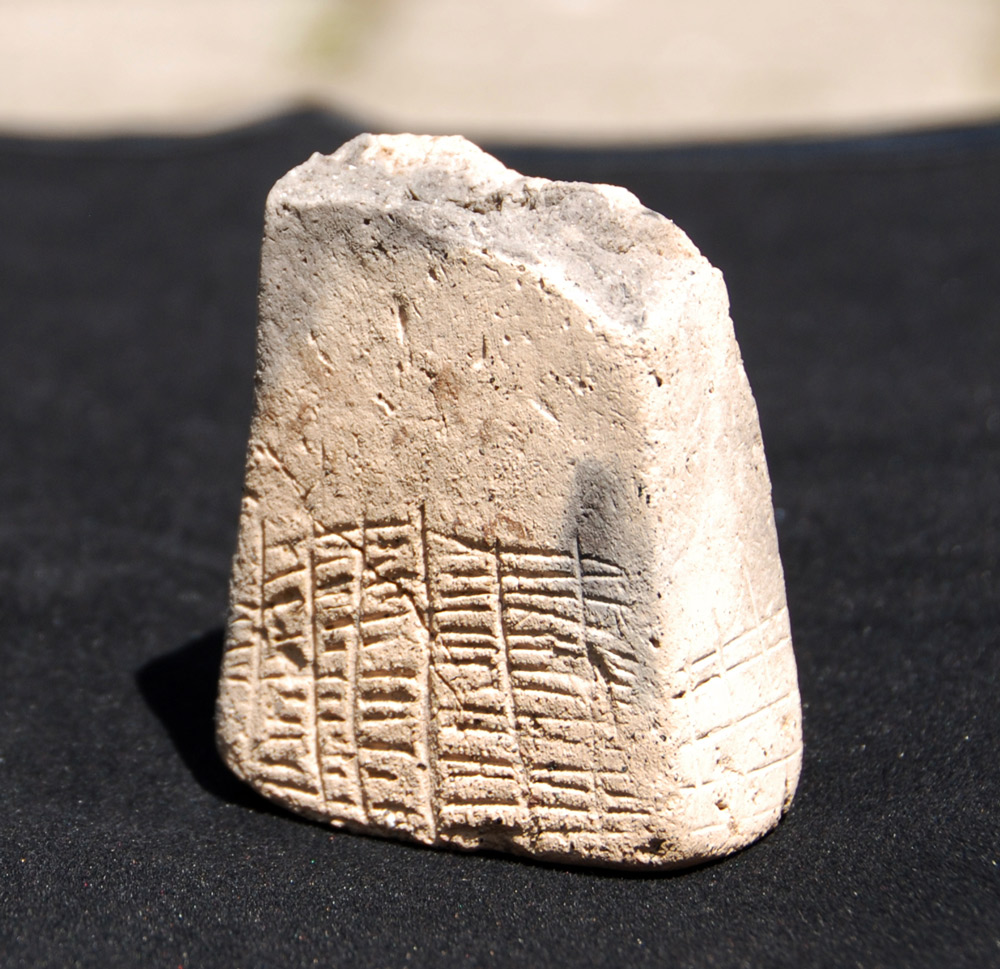The prisms with protowriting from Burgas area
The idea of storing information is as old as the world. To that end early prehistoric societies have used the spoken word (see, I remember telling, retelling) and drawings on the walls of caves (graphical reproduction of a phase of cyclical in nature - birth, seasonal / collective hunting of animals, death and Melting ). In these early stages of storage of information, we can not talk about writing, but rather the idea to keep in mind the community an event that will be repeated after a certain cycle.
With the continuous diversification of life and the accumulation of more and more new knowledge to humanity arises the need for more detailed description and information transmission from generation to generation. The invention of pottery - the first artificially derived material, enable partial remedy to this problem. Ornamentation of different ceramic items contributed to the transmission of ideas and information in considerably larger areas of the known then prehistoric world. The drawings on pottery have served at least two objectives - on the one hand they have a decorative function, and the other - by them has passed the idea of basic life skills: meander - relationship to the development of society; diamond point - the family as the center of the generic society; concentric circles - a solar symbol; coupled volutes and spiralomeandar - symbols of various natural disasters and cycle in nature and Melting.
With the development of ornamental compositions of them emit certain elements and motifs that over the centuries become strong semantic load. Based on them arise "pictograms", "monograms" and "ideograms". They differ from the decorative ornaments that do not form a continuous rhythmic system. For modern man these signs are "unreadable" but for prehistoric societies were carriers of clear and accurate cult-religious or public social information.  Today we call them with the term "-written signs" to distinguish them from emerging centuries and millennia Later "codified" writing systems - logografski, syllabic and phonetic.
Today we call them with the term "-written signs" to distinguish them from emerging centuries and millennia Later "codified" writing systems - logografski, syllabic and phonetic.
Archaeological finds displayed with "-written signs" are known by the municipality of Burgas.
Back in 1956 he published a ceramic prism of "Minoan inscription" found on the surface of Settlement mound Burgas. It has dimensions h. 7.8 cm., Expanse. 2.9 cm., Deb. 2.2 centimeters. It dates back to 1700-1580 BC, placing it in srednominoyskiya period (1950-1550 BC). "The brief inscription" is a notification number and weight of commodity - bronze ingots shaped "stretched cowhide." Later this prism is interpreted as anthropomorphic sculpture from the late Chalcolithic period (mid-V - the beginning of IV millennium BC). Today, the find is exhibited in the archaeological exposition of RIM Burgas.
 The fund of Burgas Museum Store and other archaeological find, which can be interpreted as a four-sided ceramic "pyramid" with incised "-written characters". It has dimensions h. 6.3 cm., Expanse. 5.2 x 4.1 cm., Deb. 2.7 x 2.0 cm. It was discovered on the surface of Settlement mound Black Sea. Refer to the early Chalcolithic period (first half of V millennium BC). Incised marks are caused by part of the four walls were once encrusted with white paste.
The fund of Burgas Museum Store and other archaeological find, which can be interpreted as a four-sided ceramic "pyramid" with incised "-written characters". It has dimensions h. 6.3 cm., Expanse. 5.2 x 4.1 cm., Deb. 2.7 x 2.0 cm. It was discovered on the surface of Settlement mound Black Sea. Refer to the early Chalcolithic period (first half of V millennium BC). Incised marks are caused by part of the four walls were once encrusted with white paste.
On June 2, 2008 in drilling archaeological survey of Settlement mound Burgas opened four-ceramic "pyramid". It has dimensions h. 5.5 cm., Above 1.3 x 1.3 cm., Down 2.2 x 2.1 cm.  The find belongs to fifth stratigraphic level - early Chalcolithic period (4900 / 4850-4600 / 4550 BC). Before baking the clay, the four walls are mapped characters. The resulting incisions are inlaid with white paste. Today, the find is exhibited in the historical exposition of RIM Burgas.
The find belongs to fifth stratigraphic level - early Chalcolithic period (4900 / 4850-4600 / 4550 BC). Before baking the clay, the four walls are mapped characters. The resulting incisions are inlaid with white paste. Today, the find is exhibited in the historical exposition of RIM Burgas.
Hardly ever science will "read" the information is "stored" on these findings. More importantly in this case is different - even in the V century BC on the Southern Black Sea lived agricultural and stockbreeding tribes who have a clear sense of "recording" of information and transmission of this recording from generation to generation.




